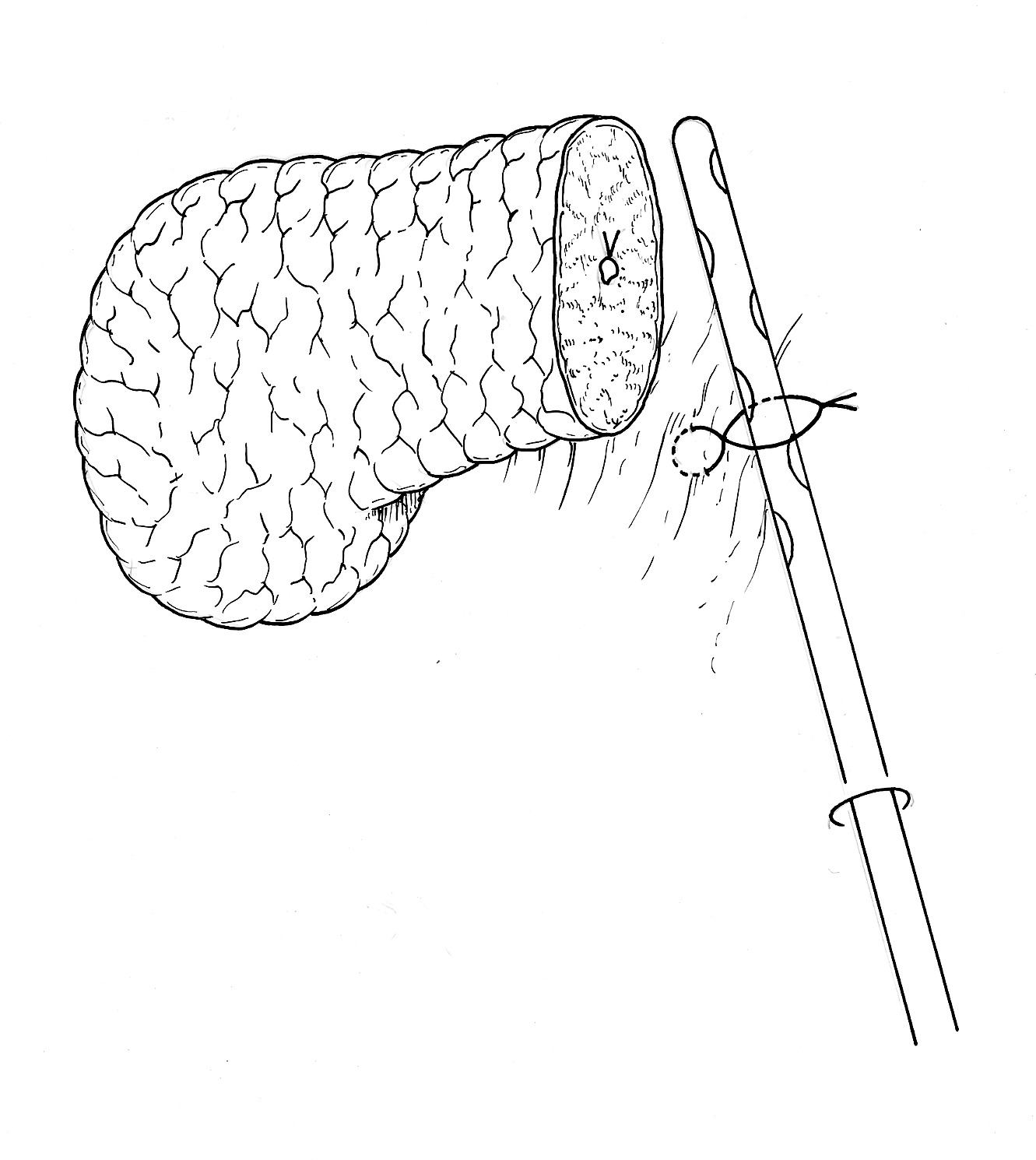|
Back to 2017 Posters
SECURE PLACEMENT OF PERIPANCREATIC DRAIN AFTER DISTAL PANCREATECTOMY
Masanori Sugiyama*, Yutaka Suzuki, Tetsuya Nakazato, Masaaki Yokoyama, Ryota Matsuki, Nobutsugu Abe, Masaharu Kogure
Department of Surgery, Kyorin University, Tokyo, Japan
Background: Peripancreatic drain that is placed after distal pancreatectomy sometimes migrates and becomes ineffective, postoperatively. We devised a new drainage method with fixation of the tip of a peripancreatic drain.
Methods: This retrospective study was done on 84 consecutive patients who underwent distal pancreatectomy followed by peripancreatic drainage (silicone duple drain) with (n=31) or without (n=53) fixation. In the drain fixation group, the tip of the drain was fixed to the retroperitoneal tissue close to the pancreatic stump, with a loose loop of an absorbable suture (Figure 1).
Results: The fixed drain remained in place postoperatively and was easily removed when the drainage became unnecessary. Pancreatic fistula (ISGPF, Grade B/C) developed in four patients (13%) with and 11 (21%) without drain fixation, the incidence being not different. None with and seven patients (13%) without fixation required additional drainage (interventional or surgical) for pancreatic fistula, the difference being significant. Time to resolution of pancreatic fistula tended to be shorter after drain fixation (20 days) than after non-fixation (31 days).
Conclusion: Fixation of the tip of a peripancreatic drain is a simple but useful technique for effective drainage after distal pancreatectomy.

Figure 1. Drain fixation
Back to 2017 Posters
|


